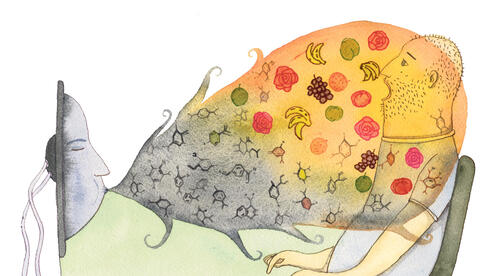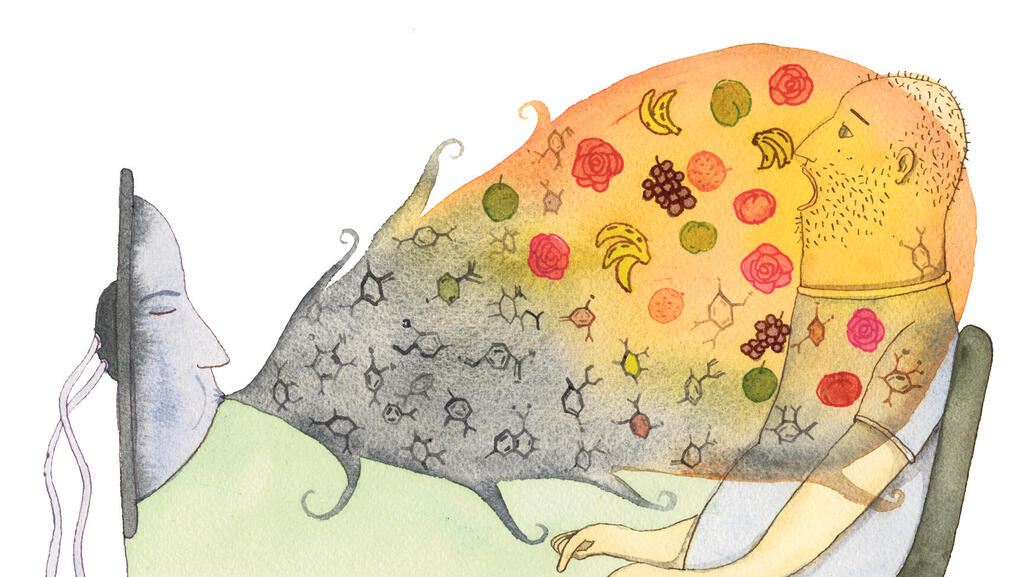
A matter of taste: AI takes over the food industry
Newly unveiled artificial intelligence software can identify with absolute precision every flavor and aroma based on their chemical and molecular structure. The next step is the mixing of flavors that are not yet known to humanity, which will change the face of cuisine and make the world a stimulating, delicious, but also stranger place
The food industry has not changed fundamentally for decades, some would say it perhaps has never changed, as at its core it is based on the cooking and processing of agricultural raw materials - only that the cooking and processing itself is sometimes very complex. But suddenly it is not clear what will be left of all this in 20 years. And I write "20 years" only because this industry is slow and conservative, because it could have already completely changed by now, in a multitude of directions, from a revolution of a complete return to natural ecology to a complete disconnection from agriculture and the creation of a completely engineered diet from scratch.
In August 2023, it took another small, but resounding step into the future. Artificial intelligence has learned to recognize the flavors of substances, without the help of human language: type into the AI software a symbol of a molecule, and it will say what its fragrance will be. This can shake up industrialized food, meaning what we eat most of the time.
Industrialized and processed food gets its taste mainly from flavoring substances. In the branch of the production of flavoring materials, there are indeed chemists and technologies, but in essence it is also a basic culinary craft, a kind of quest in the market: you come across an agricultural product with a certain taste and think about what to do with it. That is why processed food all have that distinctive taste.
Now this whole process has been handed over to artificial intelligence. A summary of what happened: A startup called Osmo built with researchers from Google and The Monell Chemical Senses Center in Philadelphia - the world's number one university for taste and smell—artificial intelligence software that knows the smell of every substance in the world. The researchers fed the AI the aroma descriptions of the industry's 5,000 known compounds, then presented it with the chemical symbols of 400 new compounds to which it had not been exposed, and the descriptions it gave scored with remarkable accuracy the impressions of a panel of human tasters, including a rating for the strength of taste or smell of each ingredient.
The AI simply found on its own the multidimensional regularity that binds the shape, the polarities, the electrics, the soluble ends in the chemistry that creates the scent.
It's exciting. Just as our brain interprets sugars as sweet and acids as sour and alkaloids as sour, now there is machine-learning that with the same simplicity understands the world of aromas, from the fruity to the browned, including all the nuances of taste and cooking. You feed it the name of a material and it says what the note is. And this applies to any material, even invented, provided that you enter a chemical symbol into the software.
Osmo's AI organized all the flavors in a kind of multidimensional map: a kind of graph with many routes that creates a space of more than three dimensions. The human mind is not capable of grasping such a multidimensional space, but it can be translated into mathematics. In this space, the AI placed all the molecules, according to the similarity, difference and overlap between their properties, and how they are expressed in the differences between the aromas of each molecule.
The basis of the discovery, by the way, rests on the idea that, as with the tastes of the human tongue, the physical form of a molecule is related to the fragrance it creates, and there is an overlap between the similarities and differences of molecules and the similarities and differences in their fragrances. And I'm not sure how much of this is my creative interpretation, but in the research documentation it is implied that the entire world of flavors and aromas, and the relationships and encounters between them, the entire taste experience, is reflected in the physical form of the molecules, and in their structure.
The flavor industry is excited by the discovery, because it facilitates, optimizes and accelerates the research and development of food.
But I smell something else here, even more dramatic, because there is something that Osmo's AI did not do: in the food industry, the mixing of the flavors of the products is also basically classic cooking. Dilute, taste and fix, until you reach the taste you want. There is no other way. It sounds obvious, but actually, today the human race has no way to predict what flavor will come out from mixing 3-4 substances, certainly not volatile chemicals. We don't know the principles, we don't know what the formula is.
This is the next step. When that happens, when AI can put together all the "recipes" of all the flavors, two things will happen: there will be a new era of more convincing, tantalizing and delightful flavors; And in addition to that, maybe a new category of taste will also be created, a DALL-E of taste: a computer will be able to concoct new successful and accepted tastes that no human has yet experienced in their sensory perception.
I think of the paintings and photographs that AI creates, which are surprising and cool, and the best of them are pulsating, but always with some doppelganger strangeness - a strange look of nature. And that's just what I'm imagining.














